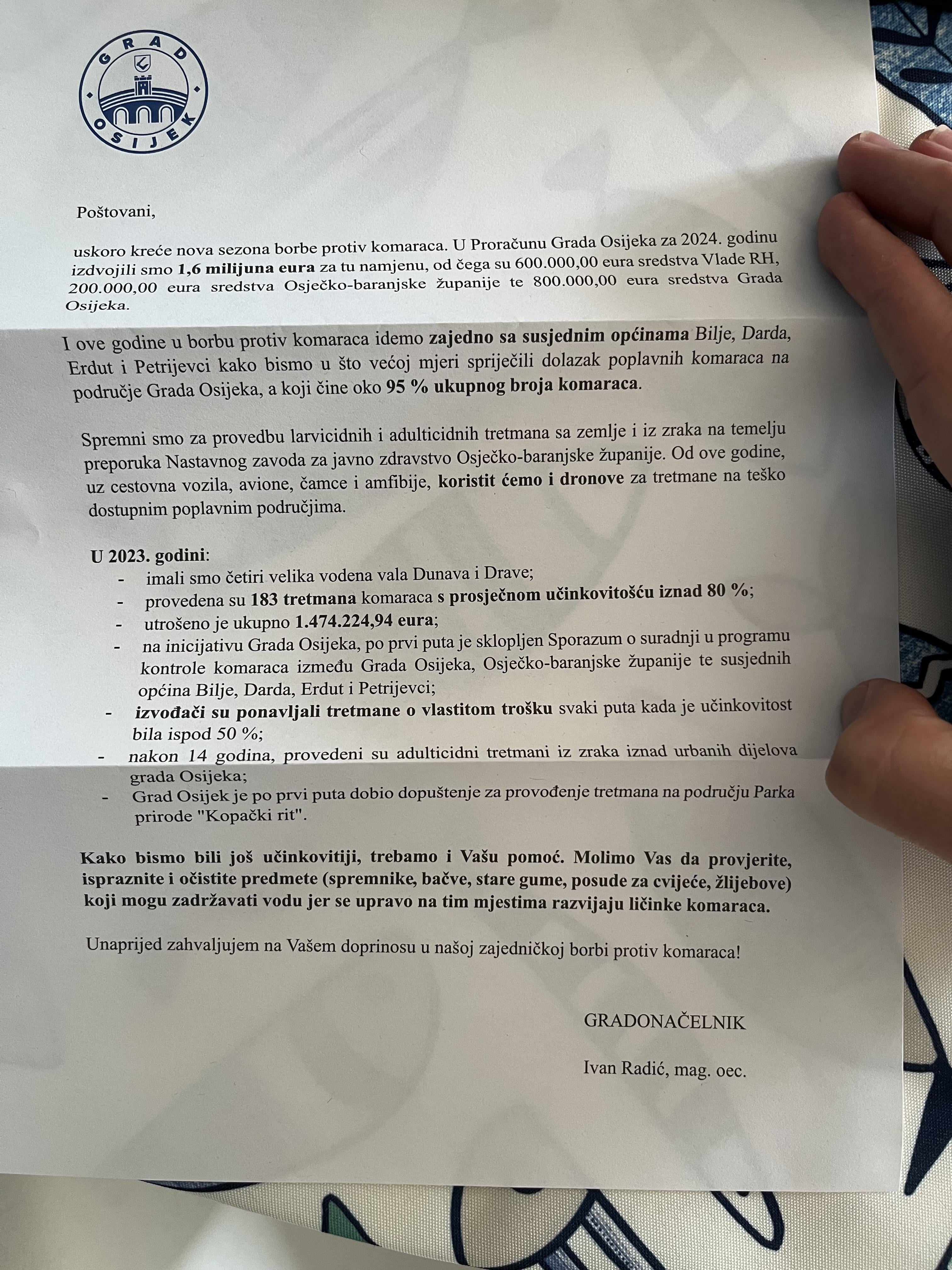
This morning I wake up, take the mail out of the mailbox and this news greets me among the bills. “For the first time, the city of Osijek received permission to carry out treatment in the area of the Kopački rit Nature Park”. I don’t know who is behind this decision and approval, but whoever is behind it, I would like to know if you are aware of what such a treatment would do to the PP Kopački rit area? Here are some facts about Kopački rit: 1. Kopački rit covers 23,000 hectares of wetland area 2. Kopački rit is a permanent or temporary home for more than 300 species of birds (many of which feed on insects) 3. Wetlands, lakes and floodplains Kopački rit is created by the Danube 4. Kopački rit is also home to numerous endangered species, mostly birds, and then other animals such as amphibians 5. Kopački rit is a UNESCO protected site precisely because of its biodiversity and immense importance for the local flora and fauna. if the authorities in the City of Osijek obviously did not think of it, I would like to share a few facts about the effect that treating mosquitoes could have on a sensitive, yet crucial area such as Kopački rit. 1. Kopački rit, precisely thanks to its great biodiversity, is an area of delicate ecological balance. Killing mosquitoes directly deprives all animals that feed on these insects of food. This includes not only birds, but also fish, amphibians, reptiles and other insects. 2. Animals that feed on animals that feed on mosquitoes also become endangered by this because their prey also becomes polluted and poisoned. Along with the prey, the water (around which the entire Kopački rit was created), the earth, the air and the trees are also poisoned. So the entire biology suffers a huge damage and blow, not just mosquitoes. 3. Pesticides reach the water, which greatly impairs its purity and drinkability, along with the pollution of natural water filtrates. 4. It has long been shown that mosquitoes adapt over a certain number of years to the means with which they are treated and become resistant to it. Do we want to increase the dose? We want to treat with several different agents so that everything settles nicely? Will this item for re-treatment if the efficiency is below 50% also apply to Kopački rit? Is the goal to kill everything that moves? 5. Frequent visitors (of which there are a significant number) and employees of Kopački rit, this is certainly not good for their health. Frequent exposure to such agents causes respiratory, neurological and skin problems. In recent years, Kopački rit has been drying up by itself and remains without water, and there is almost no winter or snow at all. Is treating mosquitoes (and thus all other animals and plants) really what is needed to maintain biological balance as much as possible? The situation with mosquitoes in recent years is more than tolerable, there are some, but not unbearable, so that such measures are necessary. I can’t tell the surrounding places. I can’t come to the conclusion that anyone thought this was a good idea and a sustainable way to control the mosquito population in Osijek and the surrounding areas. Along these lines, I hope that if you see the same or similar problems with this move, that someone will feel moved to write a petition against this decision.
https://i.redd.it/nkuw31puaeuc1.jpeg
Posted by TendencyToImprove


3 Comments
Komarci sigurno ovo ne bi dozvolili.
Kad sam bio u obilasku kopackog rita su nam rekli da je zabranjeno sustavno unistavanje komaraca bas zbog prehrane ostalih zivotinja, npr za kormorane.
Lako je tuđim kurcem mlatiti kad ne živiš u baranji.
https://www.index.hr/mobile/vijesti/clanak/video-ogromna-najezda-komaraca-u-baranji-masakriraju-nas-ne-da-se-zivjeti/2464544.aspx